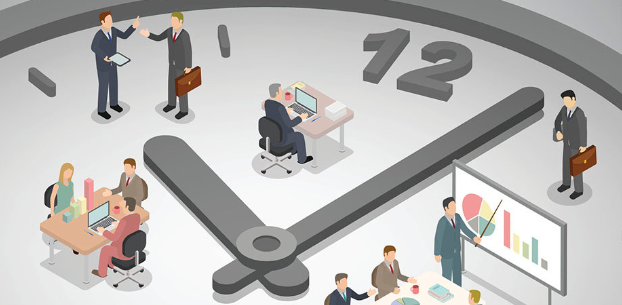When an organization is on a mission to improve employee engagement, questions abound.
Invariably someone will ask, “how much can we expect engagement to improve year over year?”
It’s a stock question without a pat answer.
Engagement measurement isn’t an exact science. There are lots of variables to consider.
How long has employee engagement been a part of your organization? Or is it something new?
Is it an intrinsic part of your organization’s culture? Or is employee engagement just another project?
Is accountability for department or division employee engagement scores a performance benchmark or management compensation consideration?
Is senior leadership authentically supportive, actively engaged and engaging?
A recently published AON study involving 359 organizations representing 420,000 employees from different industries around the world, investigated employee engagement trends to shed a little light on that proverbial “how long until improvement” conundrum.
According to Ken Oehler’s white paper, The Engagement Outliers, year over year:
- The average organization improves employee engagement by a point or two
- 10% of organizations see scores decrease by 10 points or more
- 15% drop by four to nine points
- 18% drop by one to three points
- 8% experience no change
- 30% increase by one to five points
- 13% increase six to 10 points
- 10% increase by 11 points or more.
That’s the short answer to the multi-barreled improvement question. But at least it’s a starting point, a place to gauge your organization’s employee engagement progress.
How and where does your organization’s employee engagement stack up against these numbers?
Are your scores at par, slowly inching up one or two points a year?
Below average, leaving gaps of room for improvement?
Precedent setting, meaning the ability to increase employee engagement or even maintain such stellar results is a challenge at best?
Why your scores move up or drop down is dependent upon your workforce’s feedback and the key employee engagement drivers that surface specific to your organization.
Oehler observed organizations with employee engagement scores sitting at the bottom of the barrel make the greatest improvements by addressing:
- infrastructure barriers – processes and resources that help people get work done
- cultural shortcomings such as leadership
- meaningful work carried out with a healthy degree of autonomy
- continuous learning, professional development and growth.
Organizations perched somewhere in the middle move the bar by focusing on:
- A CEO who willingly and actively champions the engagement agenda
- Strategic recruiting with the right skill sets and cultural fit front of mind
- Empowering, enabling and trusting.
For the rare few organizations that improve employee engagement dramatically, leaping 10 or 15 points in a year, senior leadership’s role is critical alongside attraction, retention and enablement practices, and an authentic emphasis on recognition and rewards. Interestingly, rewards only become an important driver of engagement when all other factors are in place.





